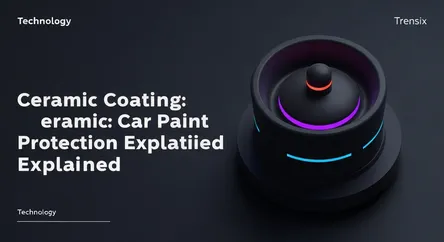Technology
Ceramic Coating: Car Paint Protection Explained

Discover ceramic coating, the long-lasting liquid polymer that protects your car's paint from damage, enhances gloss, and makes cleaning a breeze.
What is it?
A ceramic coating is a liquid polymer that is applied by hand to a vehicle's exterior. It chemically bonds with the factory paint, creating a semi-permanent, hydrophobic layer of protection. Unlike traditional car wax or sealant that sits on the surface, a nano-ceramic coating integrates with the paint to form a durable, glass-like shield. This advanced chemical technology, often based on silica dioxide (SiO2), provides superior hardness and longevity, protecting the car from various environmental contaminants and making it much easier to clean.
Why is it trending?
The popularity of ceramic coatings is soaring due to their incredible performance and long-term value. Car enthusiasts and everyday drivers are drawn to the deep, glossy finish it provides, which often surpasses the original showroom shine. Its primary selling point is long-lasting protection against UV rays that cause fading, chemical stains from bird droppings and acid rain, and minor scratches. The rise of professional detailing influencers on social media has visually demonstrated these benefits to a massive audience, fueling consumer interest in achieving and maintaining a perfect finish.
How does it affect people?
For vehicle owners, a ceramic coating is an investment in preserving their asset. It significantly reduces the time and effort needed for maintenance, as the hydrophobic surface repels dirt and water, making washes faster and less frequent. This eliminates the need for regular waxing, saving money over the long run. By shielding the original paint from damage, it helps maintain the vehicle's aesthetic appeal and, crucially, its resale value. It offers peace of mind, knowing the car's exterior is well-protected against the elements, keeping it looking newer for longer.